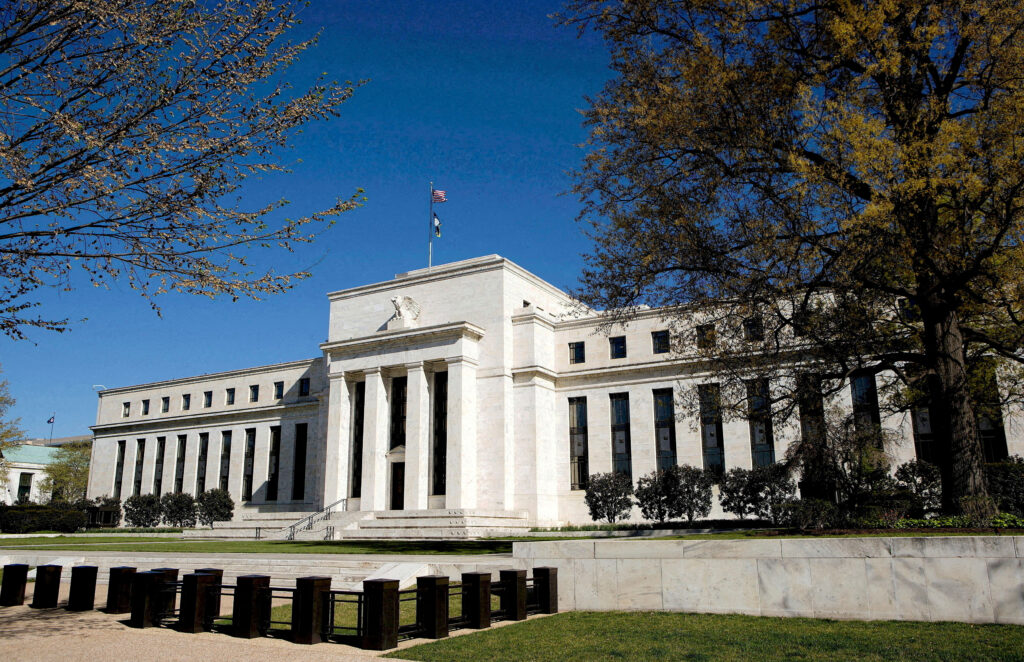

WASHINGTON (Reuters)
Slowing inflation in August buttressed arguments Federal Reserve officials used in defence of their decision to lower interest rates by half of a percentage point last week and prompted traders to bet the U.S. central bank will continue a fast pace of rate cuts as price pressures ease towards its 2% target.
Over the past four months, the personal consumption expenditures price index stripped of volatile food and energy elements has been increasing at less than a 1.8% annual rate, according to data for August released by the Commerce Department on Friday. Fed Governor Chris Waller anticipated that trend in the data last week in comments explaining why he supported the half-percentage-point rate cut and was now concerned price pressures may be easing too much.
Saying he anticipated a monthly core PCE increase of 0.14% to push the three- and four-month rates down, Waller told CNBC last week “that is what put me back a bit to say, ‘wow, inflation is softening much faster than I thought it was going to.'”
The actual monthly number for August was 0.13%.
Other data from the August PCE release boosted different arguments Fed officials made in the wake of last week’s meeting, with aspects of housing, for example, increasing at less than a 5% annual rate for the first time since early 2022.
Atlanta Fed President Raphael Bostic has used the share of goods increasing at an annual rate of 5% or greater as a key touchstone in his analysis of inflation, and noted last week that housing was the final significant holdout.
“The breadth of price increases is narrowing to a range that accords with price stability,” Bostic said after the Sept. 17-18 meeting. The share of items increasing at 5% or more in July was only 18%, the lowest since 2020 and comparable to the long-term average of 17%. Calculations for August are not immediately available.
Housing is now “one of the only areas of residual elevated price pressures,” he said.
“If the Fed wants to cut by another 50 basis points in November, the inflation data isn’t going to stand in their way,” said Omair Sharif, president of Inflation Insights. “The faster inflation cools, the more impetus there is for them to move faster.”
The Fed’s next policy meeting is on Nov. 6-7. Traders now expect the central bank’s benchmark overnight interest rate to be three-quarters of a percentage point lower than it is now by the end of this year, implying another half-percentage-point cut at that meeting or in December.
Not quite a consensus
The Fed did not have full buy-in for its rate cut last week, when policymakers lowered the policy rate to the 4.75%-5.00% range. Going into that meeting, the central bank had held rates steady for 14 months as inflation declined.
Fed Governor Michelle Bowman dissented in last week’s decision, preferring a smaller quarter-percentage-point rate cut, and economic projections implied others were at least a bit reluctant to start the easing cycle with an outsized move.
In an example of how different policymakers can take a different view of the same data, August’s inflation number may do little to assuage Bowman that another large reduction is needed, with core PCE inflation edging higher to 2.7% last month from 2.6% in July.
Bowman this week said she dissented because on a year-over-year basis “core inflation remains uncomfortably above our 2% target.”
Labour market is ‘job one’
Some policymakers note, however, that the year-over-year number may well nosedive in early 2025 because the price index will be compared to a prior period when inflation was increasing faster then expected – with so-called “base effects” favouring lower year-over-year readings.
That is one reason some policymakers focus on more recent price readings, and why others have thrown the focus onto the job market now that they are more confident inflation will return to 2%.
Fed Chair Jerome Powell in particular has said he is concerned risks to the job market are increasing.
Evidence of that in coming labour market reports, including the September jobs report due on Oct. 4, may nudge the Fed toward larger or faster rate cuts.
“There are many, many employment indicators, and what do they say? They say this is still a solid labor market,” Powell said at his post-meeting press conference on Sept. 18, noting the current 4.2% unemployment rate is below the long-run U.S. average.
But the trajectory of several aspects of the job market “bears close watching,” he said. “A broad set of indicators suggests that conditions in the labour market are now less tight than just before the pandemic,” an era Powell regards as a sweet spot with sustained low unemployment and wages rising at a solid, non-inflationary pace.
The unemployment rate, for example, has been rising, and policymakers expect it to end 2024 at 4.4%, a full percentage point above the lows in 2023 and a higher level than what Powell inherited when he became Fed chief in early 2018.
In addition, Powell said that the closely watched relationship between job openings and unemployment, which has shown the labour market loosening through a decline in openings rather than outright job losses, is now “very close to that point, if not at it,” where “further declines in job openings will translate more directly into unemployment.”







Comments